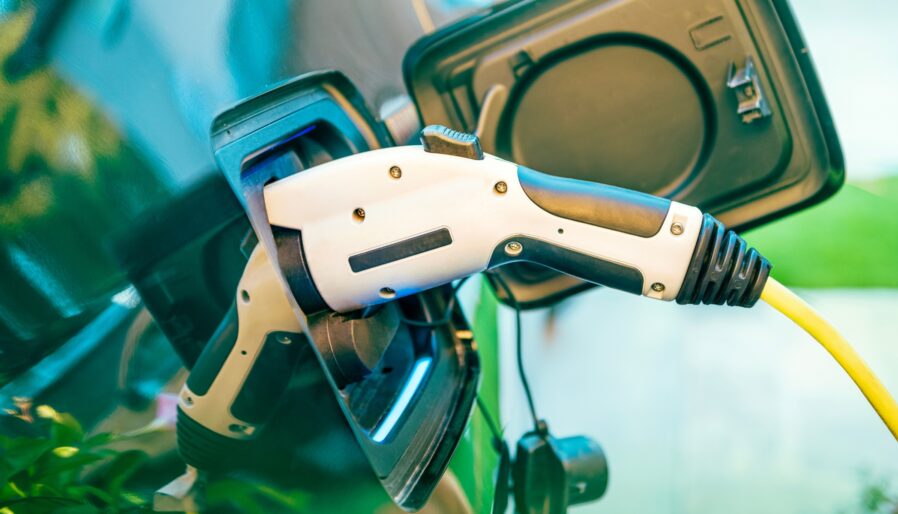
China regularly makes headlines in environmental policy — from the construction of the world’s largest hydropower dam to installing renewable energy at breakneck speed. A world leader in battery technology, the largest installer of renewables, and a major electric car manufacturer, China has shown strong willingness to transition its energy system. Given that Chinese environmental policy is the subject of both scrutiny and enthusiasm, and given recent national carbon emissions show signs of decrease, present-day China is a fascinating place to be in.
Over the past months, while working for Swissnex in China, I had the opportunity to learn more about what is happening on the ground of China’s evolving green movement. As a student of environmental policy, our focus had largely been on Switzerland and the EU — often overlooking what is now one of the biggest global players. As my time at Swissnex in China comes to an end, this feels like the right moment to reflect on some of the things I’ve learned.
1. The Role of the Central Government
There is a widespread assumption that everything in China operates in a highly centralized way. While the central government’s role is undoubtedly significant, I’ve shifted from viewing China’s system as a fine-tuned machine to something more akin to an organically evolving entity [1]. While Beijing sets broad objectives, such as the dual carbon goals (peak carbon emissions by 2030, carbon neutral by 2060), implementation is often left to the provinces. Much like the context-dependence of the Chinese language, top-level policy decisions frequently leave room for flexibility.
Furthermore, it often reacts and adapts to bottom-up innovation, such as with the rise of China’s massive e-commerce ecosystem, first pioneered by companies before being supported by the government. This mix of grassroots innovation, pragmatic top-down governance, and a thriving entrepreneurial scene has enabled China to build a resilient and efficient supply chain — especially critical in the material aspects of the energy transition.
2. People Drive the Energy Transition
Operating from Shanghai, China’s economic heart, I had the opportunity to connect with a diverse range of professionals, attend eye-opening events, and appreciate the value of in-person exchange. It was through this context that I made sense of the rising boom of ESG reporting, the state of critical mineral trade issues or simply about employment trends in my field. Additionally, I get to meet people working in urban infrastructure and learn about the limitations in accounting embodied carbon, about sustainability in renovations and on the overall policy framework. It’s easy to feel the pulse of the entrepreneurship with many of the people you meet on the ground, and to appreciate the nitty gritty work required to push things forward.
3. Change Happens Fast, but Adoption Takes Time
While visiting Xi-an, I encountered taxis using an older BYD model. As this model felt clunky and out-dated, it made me appreciate how far BYD has come in such a short time. The same can be said for Xiaomi and Huawei, who have both launched several electric vehicle (EV) models, alongside the many brands that one can see scurrying the elevated expressways of Shanghai. Even during my brief time in China, I noticed a significant increase in EV presence, from representing about half to now well over the majority of cars showing their signature EV green car plate. This is helped by the fact that EVs are cheaper to buy and operate over their lifetime, as many taxi drivers explain when I ask them.
And the effects of the increases can be felt outside of strictly transportation. I’ve heard many around me talk of improvement in the air quality. Visiting academic sabbaticals often comment on how calm the city sounds with EVs.
Still, with rapid change come challenges. Colleagues find new EV drivers accelerate too quickly, making rides uncomfortable. For drivers, anxiety on travel distance persists. And in some contexts, gasoline-powered cars are increasingly seen as a symbol of luxury or status. Although EV adoption is widespread in Shanghai, looking beyond major cities reveals uneven uptake — nationwide, EVs still comprise just around 6% of all vehicles [2].


I’m reminded of a talk at China Crossroads that explored what the average Chinese experience is like. In the speaker’s fascinating search for the national median income person, it was made clear that they live outside of any first, second or third tier city. This highlights that my encounters living in Shanghai are undoubtedly biased and that I still have much to uncover about the Chinese context in relation to the environment. But if I’ve learned anything, it’s that being on the ground offers insights you can’t find elsewhere — and that it’s the people you meet who often enrich that understanding the most.
Therefore it is my strong recommendation for anyone in Switzerland looking to hone their China-competences to reach out to the Swissnex in China team. With more than a decade of presence and an extensive network, they are ideally positioned to help you hit the ground running. Engaging with China’s ecosystem requires cultural fluency, regulatory awareness, and deep understanding of local dynamics— all of which Swissnex helps provide. With its bilingual, bicultural team and wide institutional reach, it offers a trusted compass in a landscape that’s often opaque to outsiders.
This internship has been a truly formative experience, and I warmly recommend my peers to apply for it if they have the opportunity.
Article posted on August 20, 2025.
[1]: Gann, D., Zhang, M., & Dodgson, M. (2022). Demystifying China’s innovation machine: Chaotic order. http://dx.doi.org/10.1093/oso/9780198861171.001.0001
[2]: China has 20.41 million new energy vehicles running on roads by end of 2023. (n.d.). https://autonews.gasgoo.com/m/70030708.html
Author

Yitao Li was a former Junior Project Manager at Swissnex in China (Nov 2024 – Jul 2025). He holds a Bachelor’s degree in Environmental Science and Engineering from EPFL and is currently pursuing a Master’s degree in Environmental Systems and Policy at ETH Zürich.